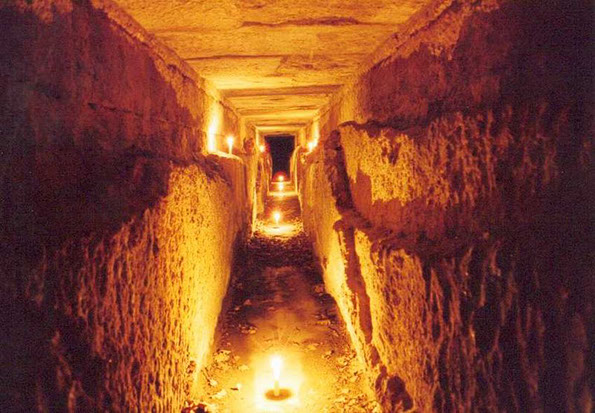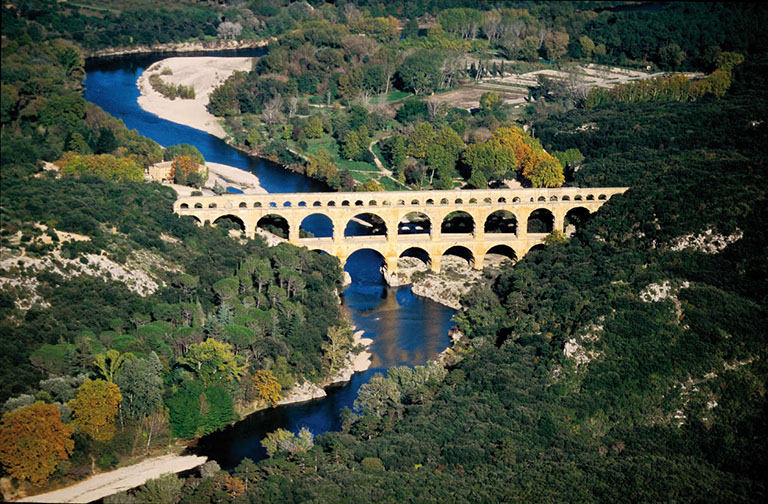
The bridge has three rows of arches, standing 48.8 m high, and previously carried an estimated 200 million litres of water a day to the fountains, baths and homes of the citizens of Nîmes.
The aqueduct descends from a height of 17 m along its entire length, indicating the great precision that the Roman engineers were able to achieve with only simple technology. It was possibly used as late as the ninth century, and until after the fall of Rome.
However, the lack of maintenance from the 4th century onwards meant that it was increasingly clogged by mineral deposits and debris that eventually choked the flow of water.
The function of the Pont du Gard was complemented by its use as a toll bridge, which ensured its survival in the Middle Ages.
Although some of its stones were looted, local lords and bishops were responsible for their maintenance for centuries in exchange for the right to charge tolls to travellers who use them to cross the river. It attracted growing fame from the 18th century onwards and became an important tourist destination.
It underwent a series of renovations culminating in 2000 with the opening of a new visitor centre and the removal of traffic and buildings from the bridge to the adjacent area around it. Today it is one of their attractions.
The aqueduct has a winding layout measuring around 50 km, to avoid the hills above Garrigue Nîmes. The Garrigues is the southern foothills of the Massif Central. They are difficult to cross, as they are covered with dense vegetation, and this bleeding from deep valleys, and it was not practical for the Romans to try to tunnel through the hills.
La Fontaine d' Eure, 76 m above sea level, is only 17 m high from the delivery tank or Castilian in Nimes, although this has always been steep enough to maintain a constant flow of water to the city's 50,000 inhabitants. The average slope of the aqueduct is only 1 : 3,000. It is estimated that the aqueduct supplied the city with around 200 million litres of water per day. The round holes were in the city's water supply pipes connected to the tank.
On site is a small modern pumping station that provides pure water, rich in dissolved calcium carbonate leached out of the limestone. The carbonates have caused significant problems for the maintenance of the aqueduct, as they precipitate out of the water during their journey through the pipeline. This led to the aqueduct's current being progressively reduced by deposited carbonates. Another threat was posed by vegetation that penetrates the stone top of the canal, which obstructs the flow of water, along with hanging roots, algae and bacteria that decompose in a process called biolithogenesis, the production of concretions inside the canal. It had to be maintained continuously by circcitors, maintenance workers responsible for its maintenance, who crawl along the duct washing the walls to get rid of any kind of vegetation...
Like most Roman aqueducts, many of them are built underground. They are built by excavating a ditch in which a stone channel was built and surrounded by a vaulted ceiling of slabs.




BRIDGE OF GARD
CHARACTERISTICS









